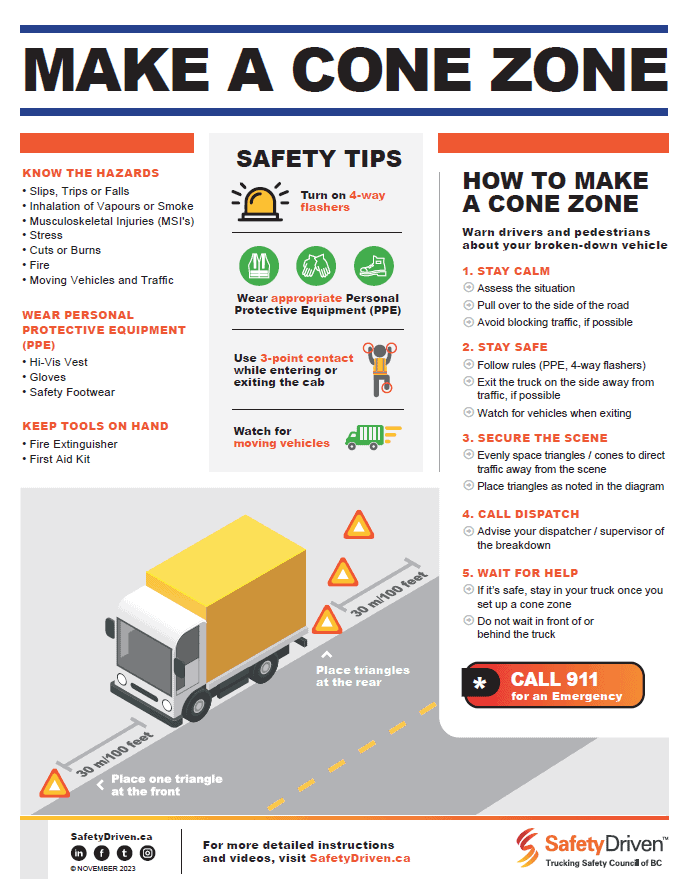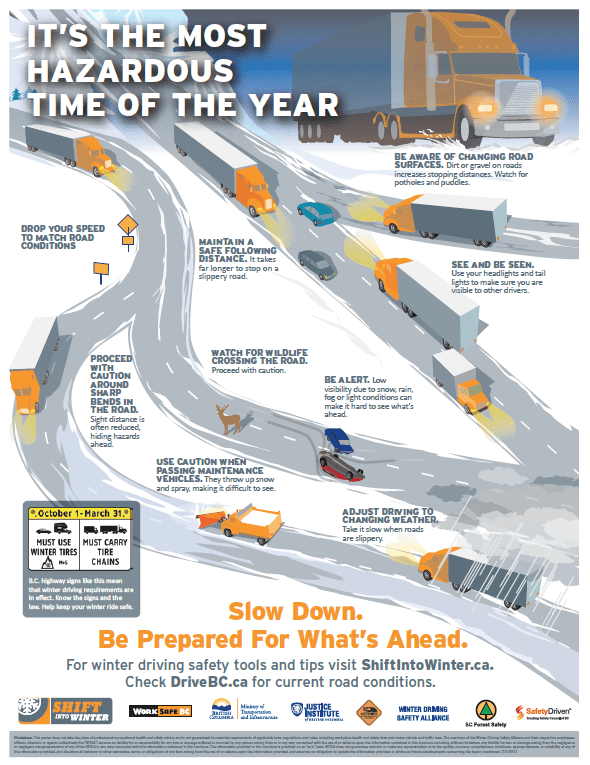
Auditing Trip Inspection Reports
All drivers of vehicles that are National Safety Code -registered must conduct pre-trip daily inspections.
Trip inspection written reports have to be completed on vehicle with a gross vehicle weight of 14,600kgs or more and buses with ten or more passengers. All drivers and vehicles that are National Safety Code-registered must conduct pre-trip inspections of the vehicles daily. The vehicles that are under 14,600kgs or buses with fewer than ten passengers do not have to have a written report in the vehicle.
Why is this required?
The trip inspection is the mechanical and operational inspection of the vehicle at the beginning of the day before the first trip, over the course of the day if a defect is detected, and at the end of the last trip of the day. When the trip lasts more than one day, the post-trip inspection must be done on every subsequent day of the trip. A driver or person responsible for the pre-trip must conduct the pre-trip before the first trip of the day and at the first rest break after midnight if the trip lasts more than one calendar day.
What is the purpose of the trip inspection report other than to check the mechanical condition of the vehicle prior to the first trip of the day?
The trip inspection report is a way of recording any mechanical defects that could affect the safe operation of the vehicle for the day. This document is the way that a driver defends the safety of the vehicle while it is on the road.
Can the trip inspection report be more than just a mechanical checkoff?
The trip inspection report is the way the fleet can monitor the vehicle, including looking for smaller items that are mentioned by the driver but are not worthy of taking the vehicle off the road for repairs. The trip inspection reports also allow a driver to monitor the vehicle and make notes on items that may need servicing or to make the decision that the item is not critical and does not affect the safety of the vehicle. This document is also a good dialogue between the driver and the shop, fleet manager, or mechanic.
When must a pre- and post-trip be conducted?
The pre-trip inspection must be conducted before the first trip of the day and/or at the first rest break after midnight if the trip lasts more than one calendar day. The post-trip must be conducted at the end of the day or where the trip lasts more than one day on every subsequent day of the trip.
How long should a pre- and post-trip take to complete if there are no defects?
The pre-trip and post-trip inspections should not take longer than twenty minutes for a class-one vehicle and fifteen minutes for tandem or single-axle vehicle. Buses may take longer than fifteen minutes as the inside of the bus also requires more checks than other vehicles.
What happens if defects are detected?
If defect is detected by the driver or person conducting the pre-trip, a decision has to be made as to whether the defect can affect the safety of the vehicle or is minor in nature and can be repaired at a later date. The driver must then make a note of the defect and check off whether the defect was repaired or does not affect the safe operation of the vehicle.
What is “closing the loop”?
Closing the loop just means that the driver is notified that the repair for the defect has been completed. The can be done a number of ways, but usually the best way is to keep a monthly maintenance log in the vehicle where the driver can record any minor repairs that he/she made including greasing a fifth wheel, adding air to the tires, replacing a bulb, possibly adding fuel, and even washing the truck to look for other defects that can be hidden under road grime and dirt. The trip inspection reports allow the driver to follow a prescribed regimen when inspecting the vehicle at the beginning and at the end of the day. It is a way of the driver recording any defects detected and reporting the defects to the maintenance department. If the driver is on the highway and does not get back to the shop every day them the trip inspection reports must be mailed to the shop within twenty days of the when the pre-trip was conducted. Trip inspection reports must be kept for a minimum of 90 days and then they can be destroyed or stored offsite. Always keep two weeks of trip inspection reports that were signed by the driver after a serious accident as this can assist the driver in defending the safety of the vehicle and the fact that the driver does a comprehensive inspection daily. Drivers do have to be re-trained regularly (every two to three years) in order to stay current on the procedures and the proper methods of conducting pre and post-trip inspections of the vehicles.
Remember that conducting a thorough and proper pre-trip inspection is the only way of defending the vehicle while it is on the road.
Register for an upcoming National Safety Code training course with BC Trucking Association.
Latest Resources
Make a Cone Zone
Dowload this poster for tips on how to make a safe cone zone.Winter Hazards Poster
Drivers need to recognize winter hazards. Share this poster to remind drivers how to ...

